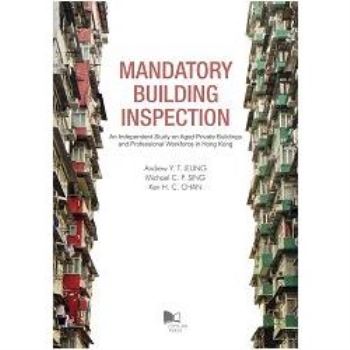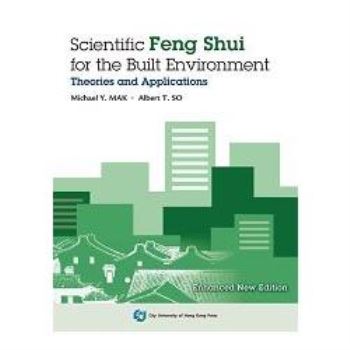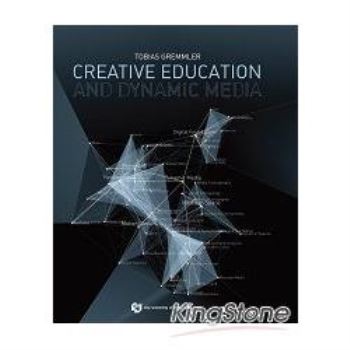-
排序
- 圖片
- 條列
【電子書】看電影與拍電影
看電影容易,看懂一部電影卻需要慢慢咀嚼細味。電影以講故事為主,講甚麼樣的故事,悲歡離合,離不開身處的社會。觀眾從電影看社會,拍電影的,也需要關懷社會,了解社會, 洞悉人生,才能拍出感動人心的作品。觀眾能夠感動,其實就是因為電影將人生寫得透徹入微,讓看的人有共鳴。 不同人對同一部電影的理解不盡相同。導演趙崇基看了四十年電影,拍了二十年電影,也在學院教電影,對他而言,無論電影藝術如何改變,都離不開技巧、社會、人生這三種元素。此書是他的電影筆記,分為三部分,以電影語言中的三個景別:特寫、中景及全景,透過一篇篇的短文,談電影中的技巧,說電影中的社會,講電影中的人生。 拍電影的人不僅對電影本身有一定的自覺和敏銳度,也需要更細微地觀察周遭環境和人事物。正是通過這些發現與探索的過程,才能為電影帶來豐富的題材。作者希望以專業電影人的視角,將自己多年來看電影、拍電影、教電影的一些心得和感想與讀者分享,也期望有興趣於電影行業發展的有志之士、就讀相關學科的學生,以及一眾愛電影的讀者,能從本書中有所得著。
【電子書】東西方電影【增訂版】
電影雖然是西方的發明,但在其誕生第二年已傳入東方。回望120年的發展,電影在亞洲地區與在歐美一樣有着深厚綿長的軌跡。然而,現時的電影教科書通常只側重西方,在講述世界電影的發展史時,亦少論及東西方電影之間的關係。《東西方電影》第一版在2014年7月出版,目的就是彌補現有電影史和教科書中這經常被忽視的內容,並探究電影技術相對滯後的發展中國家出現的電影「新浪潮」,以及電影史中經常遺漏的各國先鋒女性導演的貢獻。這本增訂版在上一版的基礎上,進一步補充各國重要的女導演及她們的作品,並納入到電影發展的表述之中,同時深入探討紀錄片發展中的大事件對於劇情片風格的影響。本書文字上力求通俗易明,內容不拘一格,包含鮮為人知的電影大師、電影運動、片廠制度背後的傳奇故事,讓讀者不會再把電影看成是孤立的、只為教化或娛樂為目的的媒體。對於初次接觸電影歷史的學生和電影愛好者,本書是一個入門讀本。而電影與人類的社會文化生活有着密切的關係,透過電影發展史,讀者更能了解東西方文化的相互影響與滲透。
【電子書】Mandatory Building Inspection:An Independent Study on Aged Private Buildings and Professional Workforce in Hong Kong
Memories are still vivid on the incident: on 29 January 2010, a five-storey building at 45J Ma Tau Wai Road, To Kwa Wan, Hong Kong collapsed, causing four deaths and two injuries. The tragedy has raised public concerns about the safety of many of Hong Kong's old and dilapidated buildings. Realising that the presence of ageing buildings lacking proper care and maintenance poses potential threats to residents and the public at large, since 2012, the Buildings Department has implemented the Mandatory Building Inspection Scheme (MBIS) to carry out inspection and rectification works for buildings aged 30 years or above. This book, as a pioneer to review and examine the statistics and distributions of the aged buildings in Hong Kong, provides critical insights on the building decay and neglect problems. The statistical information highlighted in the book also serves to project the estimated number of aged buildings to be covered by the MBIS in the future, and the demand of professional workforce expected for the successful implementation of MBIS. The book is useful for the practising professionals in the building industry, such as surveyors, engineers and government officials. It is also an excellent reference for students and researchers in Surveying, Construction Management and related disciplines.
【電子書】Scientific Feng Shui for the Built Environment:Theories and Applications(Enhanced New Edition)
Modern architecture has become increasingly concerned about the integration and harmony between the natural and built environments. Terms like environmental protection and management, energy conservation, renewable energy, sustainability and ecology have been pouring into our ears on a daily basis. In fact, all these concepts are not new from an ancient Chinese point of view; Feng Shui or more academically, Kan Yu, is exactly the traditional Chinese wisdom aimed at creating harmony between the environment, buildings and people. Feng Shui is the philosophy which has influenced traditional building design in China for thousands of years. Based on Scientific Feng Shui for the Built Environment: Fundamentals and Case Studies published in 2011, this enhanced new edition has further taken into account the enhancements and new inputs in theories and applications. Emphasis is placed on two themes, sustainability and science. New case studies regarding sustainable design as viewed from a Feng Shui perspective, and integrated applications of different architectural models and their associations with Feng Shui concepts are added and elaborated. On science, other than exploring the new development of particle physics in relation to Feng Shui studies, a totally new approach to numerology and Luo Shu study based on modern linear algebra may bring readers new insight into the possibility of researching Feng Shui mathematically, in addition to the use of spherical trigonometry. This book offers a remarkable in-depth view of Feng Shui by integrating the historical theories with scientific explorations and examples of applications. It once again demonstrates that Feng Shui can be studied scientifically, and eventually scientific Feng Shui may become a new field of science in the academic world as well as a professional and orthodox discipline of architectural design for the built environment.
【電子書】Creative Education and Dynamic Media
INTRODUCTION The book provides guidelines and practical creative exercises which equip creative-major students in early semesters as well as creative practitioners with fundamental knowledge on creation methods. Combination of functionality, simplicity and aesthetics in modern design is considered a fundamental design principle in the Bauhaus School in Germany,and, inspired by the School, the creative handcrafting exercises and the concepts introduced in this book are primarily coherent with this principle. The book draws a direction between two and three dimensional material-based design and modern digital creation process. The first part of the book introduces various creative handcrafting exerciseson proportion, geometry and modularity, among other fundamental design principles. The creative exercises will sensitise students on aesthetical and structural issues, and thus serve as an essential building block for application of the design principles to computer-based creative processes, which are introduced in the second part of the book.







